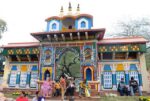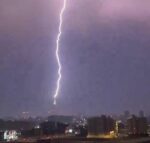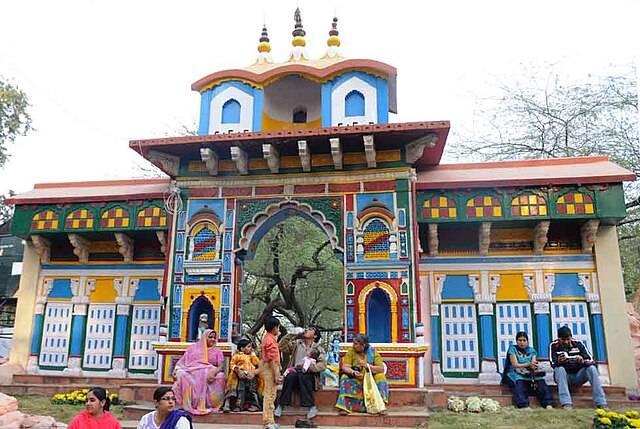- Rashtrapati Bhavan
- Raisina Hill
- Rajpath
-
Delhi’s Cultural and Artistic Treasures
- National Gallery of Modern Art
- Mandi House Complex
- Connaught Place
- The National Museum
- Jantar Mantar
- Lakshmi Narayan Mandir
- Nehru Memorial Museum and Library
- Lodi Gardens
- Purana Qila
- Jami Masjid
- Red Fort
- Rajghat
- Feroze Shah Kotla
- Around Kashmiri Gate
- The National Rail Museum
- Safdarjung’s Tomb
- INA Market
- Hauz Khas
Rashtrapati Bhavan

What is Rashtrapati Bhavan?
Rashtrapati Bhavan is the official residence of the President of India, majestically perched on the crest of Raisina Hill.
This grand structure was designed by Sir Edwin Lutyens and originally served as the British Viceroy’s Palace. The building,
with its vast copper-clad cupola and elegant beige and red sandstone, covers an area of 2 hectares (5 acres).
When is the Change of Guard Ceremony?
The Change of Guard Ceremony at Rashtrapati Bhavan is a sight to behold! It takes place on Saturdays, with different timings
depending on the season: April to October at 8 AM, and November to March at 10 AM. Make sure to catch this ceremonial event
during your visit!
What can you find in the Mughal Gardens?
To the west of Rashtrapati Bhavan lie the beautifully landscaped Mughal Gardens. These terraced gardens, with flowing
watercourses and fountains, are a stunning blend of British and Mughal styles. They are open to visitors in the spring
months, typically from February to March.
Raisina Hill
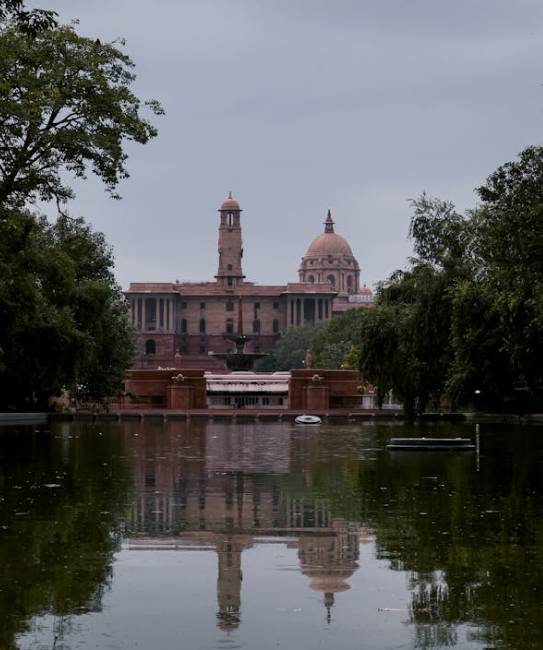
Why is Raisina Hill famous?
Raisina Hill is a symbol of power and authority in India. It was selected by the British as the site for the new capital.
Today, it is a heavily guarded area dominated by stately buildings, including the twin North and South Blocks of the Secretariat.
Who designed the North and South Blocks?
The North and South Blocks, which rise from the top of Raisina Hill, were designed by Sir Herbert Baker, a prominent British
architect. These buildings are nearly identical and are a key part of the Indian government’s administrative framework.
What is Sansad Bhavan?
Sansad Bhavan, also known as the Parliament House, is where the Rajya Sabha (Upper House) and the Lok Sabha (House of the People)
convene during parliamentary sessions. It is a grand circular building also designed by Sir Herbert Baker. Although it is closed
to visitors following the December 2001 terrorist attack, it remains a significant landmark in Indian democracy.
Rajpath
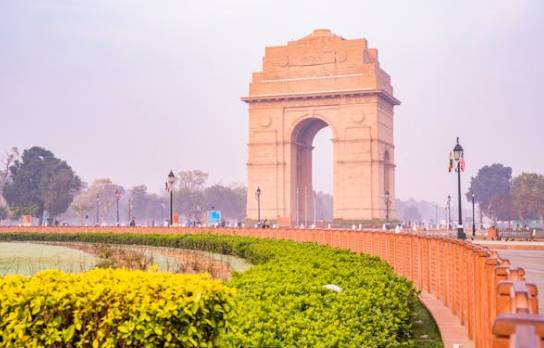
What is Rajpath used for?
Rajpath is a two-mile-long avenue that plays a central role in India’s national events, especially during parades. The road is
flanked by ornamental fountains, canals, and lush lawns, making it a picturesque route for significant celebrations.
Where can you find the National Archives?
The National Archives of India are located at the intersection of Rajpath and Janpath. This institution houses an extensive
collection of state records and private papers, making it a treasure trove of historical documents.
What does India Gate commemorate?
India Gate, located at the eastern end of Rajpath, is a massive red sandstone arch built to honor Indian and British soldiers
who died in World War I and the North-West Frontier Province battles, including the Third Afghan War. An eternal flame burns
in memory of soldiers who fell in the 1971 India-Pakistan War.
Facing India Gate is a sandstone canopy that once held a statue of King George V, now relocated to Coronation Park. The canopy
stands empty but serves as a reminder of the nation’s colonial past.
National Gallery of Modern Art
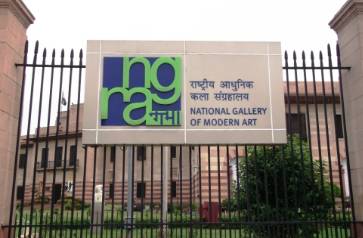
Did you know that Jaipur House, near India Gate, is home to one of India’s largest modern art museums? The National Gallery of Modern Art (NGMA) covers the period from the mid-19th century to the present day. Have you ever wondered what it’s like to explore a former residence of the maharajas of Jaipur that now houses a treasure trove of modern art?
What makes the NGMA stand out among other museums? Its collection includes works by iconic Indian painters like Jamini Roy, Rabindranath Tagore, Raja Ravi Varma, and Amrita Shergill. Are you curious about how these artists have shaped modern Indian art? The museum also features contemporary artists such as Ram Kumar and Anjolie Ela Menon.
Have you ever encountered the works of British artists like Thomas Daniell and his nephew William Daniell? The NGMA includes their works, as well as a fascinating collection of “Company Paintings” – 18th- and 19th-century pieces created specifically for the British market. Isn’t it intriguing how art serves as a window into history and culture?
Mandi House Complex
Have you visited Mandi House, now the headquarters of the state-owned television center? This area lends its name to a vibrant cultural complex. Are you aware of the various institutions housed within this complex, including the renowned Triveni Kala Sangam and Rabindra Bhavan?
Triveni Kala Sangam features contemporary art galleries, an open-air amphitheater, and a café that has become a cultural hub. Did you know you can also find a bookshop specializing in Indian arts publications here? How about attending a performance at the Kamani Auditorium or the Shi Ram Centre?
The state-sponsored Rabindra Bhavan arts complex houses the national academies of literature (Sahitya Akademi), fine arts, and sculpture (Lalit Kala Akademi). Do you ever wonder about the role these institutions play in promoting Indian art and culture?
Connaught Place
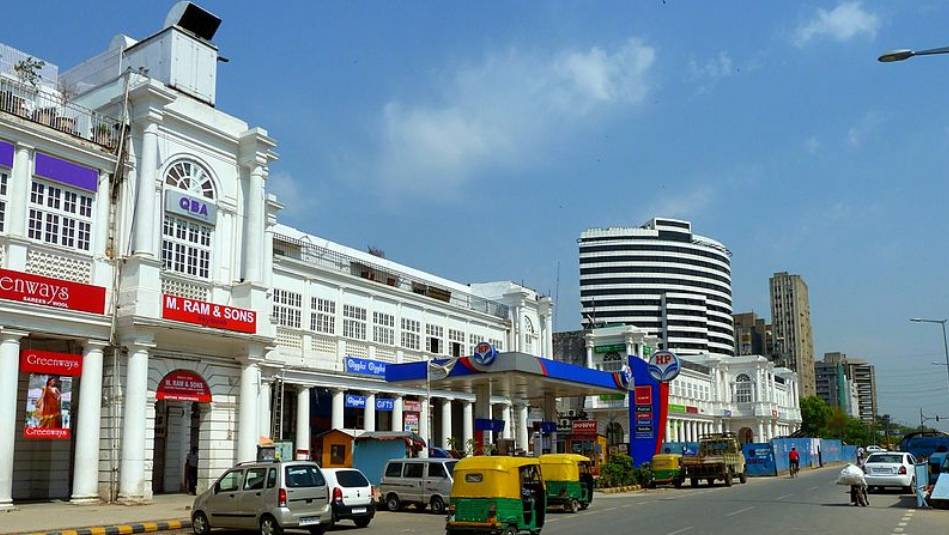
Have you ever explored Connaught Place, one of Delhi’s iconic shopping districts? Did you know it was opened in 1931 and named after the Duke of Connaught? This shopping complex, with its Palladian archways and stuccoed colonnades, was designed as a deliberate contrast to the bustling Indian bazaars.
What draws you to Connaught Place today? Is it the mix of shops, cafes, and cinema halls, or perhaps the shaded arcades that offer a pleasant escape from the heat? Are you curious about the recently built Central Park with its amphitheater, fountains, and plush lawns?
How about exploring nearby shopping centers like the state emporia at Baba Kharak Singh Marg or the bustling streets of Janpath? Did you know that Cottage Industries, another popular shopping destination, is also located on Janpath?
The National Museum
Source
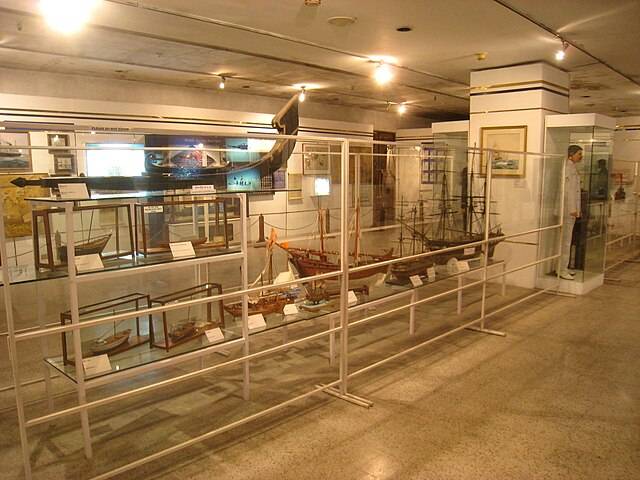
Did you know that the National Museum in Delhi allows you to explore five millennia of Indian history? With a collection of over 200,000 pieces of Indian art, how much time do you think you’d need to truly appreciate its vast offerings?
Have you ever imagined what it would be like to view the nucleus collection of around 1,000 artifacts that were once exhibited in London in 1948-9 at the Royal Academy’s Burlington House? After its return, these artifacts were temporarily housed in the Durbar Hall of Rashtrapati Bhavan until the museum’s current building was completed in 1960.
Are you interested in ancient civilizations? The museum’s collection of Indus Valley relics and Central Asian treasures from the Silk Route is considered among the finest in the world. How do you think these artifacts offer insights into the rich history of these regions?
Jantar Mantar 🌟
Subeesh Balan സുഭീഷ് ബാലൻ
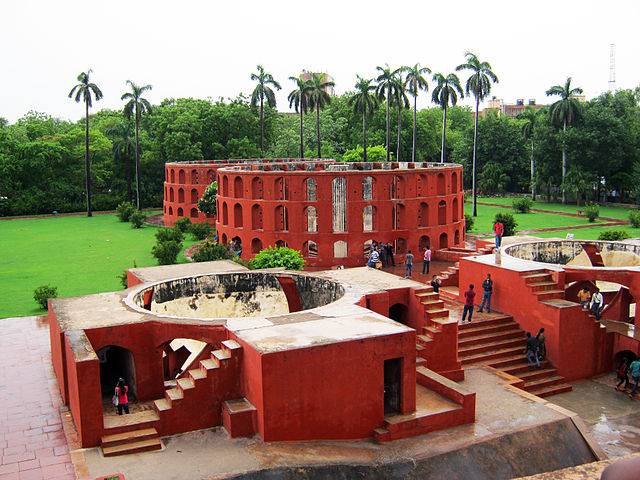
Located on Sansad Marg, Jantar Mantar is an astronomical wonder built in 1724 by Maharaja Sawai Jai Singh II of Jaipur. But what makes it so special? Why was it built?
This observatory was constructed to accurately calculate planetary positions and alignments, essential for performing sacred rituals. Did you know Jantar Mantar is one of five such observatories built by Jai Singh II across India? The instruments here are massive and fixed, designed to resist vibrations, ensuring precise measurements.
Important: The nearest railway station is Rajiv Chowk Metro Station, just 1.5 km away.
Questions to Consider:
- What are the different instruments at Jantar Mantar and how do they work?
- Why did Maharaja Jai Singh II prioritize building such observatories?
- How has the role of Jantar Mantar evolved over the years?
Lakshmi Narayan Mandir
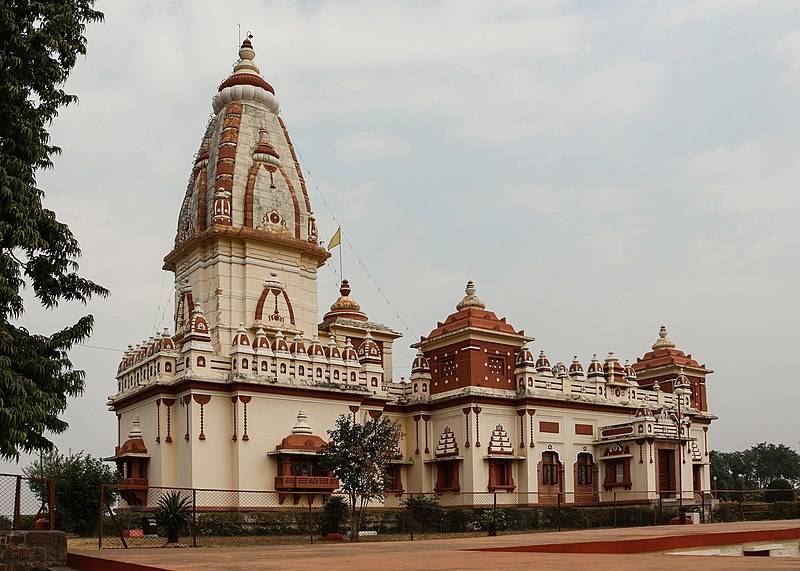
Commonly known as the Birla Mandir, this beautiful temple located on Mandi Marg was constructed in 1938 by the industrialist BD Birla. What makes this temple stand out from others in India?
Notably, it was one of the first temples in India without caste restrictions, and Mahatma Gandhi attended its first puja. The temple’s architecture is a blend of modern and traditional, with marble entrances and colorful spires.
Important: The nearest railway station is R.K. Ashram Marg Metro Station, approximately 2 km away.
Nehru Memorial Museum and Library
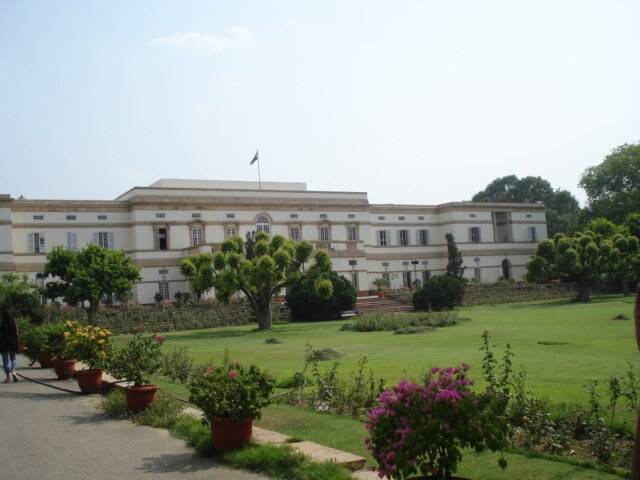
Situated on Teen Murti Marg, this museum was the residence of India’s first Prime Minister, Jawaharlal Nehru. But what secrets does this historic home hold?
After Nehru’s death in 1964, the house was transformed into a museum and library for research scholars. Did you know that this residence also housed two future Prime Ministers of India, both of whom were tragically assassinated?
Important: The nearest railway station is Lok Kalyan Marg Metro Station, about 2.5 km away.
Lodi Gardens
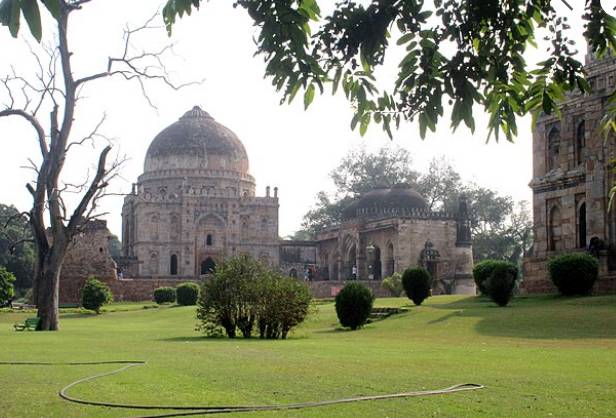
A lush oasis in the heart of Delhi, Lodi Gardens is more than just a park. What historical treasures lie within its boundaries?
Established in 1936 at the behest of Lady Willingdon, this park is home to the tombs of the Sayyid and Lodi dynasties. The park serves as a green retreat for Delhi’s residents, with tree-lined pathways and well-kept lawns.
Important: The nearest railway station is Jor Bagh Metro Station, approximately 1.2 km away.
Purana Qila
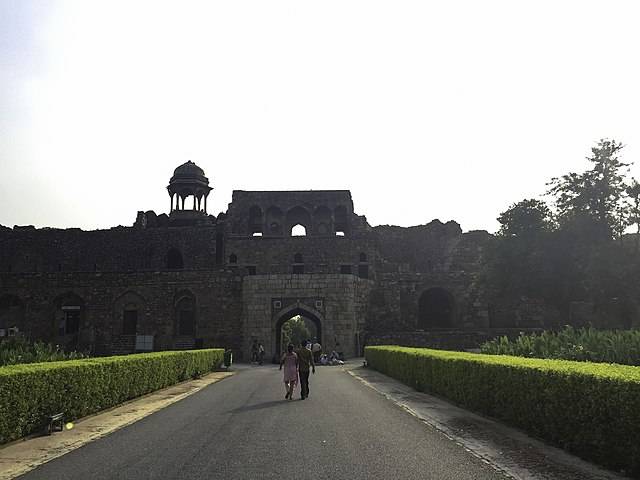
Purana Qila, or “Old Fort,” is one of Delhi’s oldest historical sites. But what stories do its ancient walls tell?
Built on an ancient site that has been continuously occupied since 1000 BC, Purana Qila was later expanded by Sher Shah Suri. Despite its age, the fort’s ramparts still stand strong, enclosing the remnants of the sixth city of Delhi, Dinpanah.
Important: The nearest railway station is Pragati Maidan Metro Station, just 1 km away.
fdd
Explore the Historic Monuments of Delhi
Jami Masjid
Location: Netaji Subhash Marg
Entry Fees: ₹9 for non-Muslims during prayer times, free at other times
History: This grand mosque was built in 1656 by Emperor Shah Jahan. It took six years and 5,000 workers to construct, costing nearly 2 million rupees. The mosque is built on a natural mound with three imposing black and white marble domes and twin minarets framing its great central arch.
Key Features: The Jami Masjid can accommodate up to 20,000 people in its 28-meter square courtyard during Friday prayer sessions and Eid. The mosque also has a dukka (water tank) for ritual ablutions and a platform where a second prayer leader once echoed the imam’s words and actions.
How to Reach: The nearest railway station is Old Delhi Railway Station, approximately 2.5 km away. From the station, you can take an auto-rickshaw or walk to the mosque.
Questions and Answers
- Q: When was the Jami Masjid built?
A: It was built in 1656. - Q: Who commissioned the construction of the Jami Masjid?
A: Emperor Shah Jahan commissioned its construction. - Q: What is the capacity of the courtyard during prayers?
A: The courtyard can accommodate up to 20,000 people.
Red Fort
Location: Chandni Chowk
Contact: 011-2227 7705
Timings: 8:00 AM – 5:00 PM (Feb-Apr & Sep-Oct), 7:30 AM – 3:00 PM (Nov-Jan), 5:00 AM – 10:00 AM (May-Aug)
Entry Fees: ₹230 (Sep-Oct & Feb-Apr), ₹200 (Nov-Jan & May-Aug)
History: The Red Fort was commissioned by Shah Jahan in 1639 and took nine years to build. It was the seat of Mughal power until 1857 when the last Mughal emperor, Bahadur Shah Zafar, was dethroned and exiled.
Key Features: The Red Fort’s Lahore Gate leads to the covered bazaar of Chatta Chowk, and from there, you can explore the Diwan-i-Aam, Rang Mahal, Khas Mahal, and Diwan-i-Khas. The fort also houses the legendary Peacock Throne, which was taken as war booty by Nadir Shah in 1739.
How to Reach: The nearest railway station is Old Delhi Railway Station, approximately 3 km away. You can take an auto-rickshaw or a taxi to reach the fort.
Questions and Answers
- Q: When was the Red Fort commissioned?
A: It was commissioned in 1639. - Q: Who was the last Mughal emperor to rule from the Red Fort?
A: Bahadur Shah Zafar was the last Mughal emperor. - Q: What significant event took place at the Red Fort on 15 August 1947?
A: The national flag was hoisted for the first time when India became an independent nation.
Rajghat
Location: Mahatma Gandhi Road
Contact: Gandhi National Museum: 011-2332 8310
Timings: 8:00 AM – 5:00 PM (Museum)
History: Rajghat is the site of Mahatma Gandhi’s cremation. A black granite platform inscribed with his last words, “He Ram!” (“Oh God”) stands at the site. Visiting heads of state lay wreaths in memory of the “Father of the Nation” here.
Key Features: The Gandhi National Museum, located nearby, houses memorabilia, including Gandhi’s letters and diaries.
How to Reach: The nearest railway station is New Delhi Railway Station, approximately 5 km away. You can take a taxi or an auto-rickshaw to reach Rajghat.
Questions and Answers
- Q: What is Rajghat?
A: Rajghat is the site of Mahatma Gandhi’s cremation. - Q: What are Mahatma Gandhi’s last words inscribed on the platform?
A: “He Ram!” (“Oh God”). - Q: What can be found at the Gandhi National Museum?
A: The museum houses memorabilia, including Gandhi’s letters and diaries.
Feroze Shah Kotla
Location: Bahadur Shah Zafar Marg
Key Features: Feroze Shah Kotla is the ruins of the palace complex of Ferozabad, Delhi’s fifth city, built by Feroze Shah Tughluq. The site includes the ruins of Jami Masjid, Ashoka’s pillar, and Khuni Darwaza.
How to Reach: The nearest railway station is New Delhi Railway Station, approximately 4 km away. From the station, you can take a taxi or an auto-rickshaw to reach Feroze Shah Kotla.
Questions and Answers
- Q: What remains of Feroze Shah Kotla today?
A: Only some ramparts and ruined structures remain. - Q: Who built Feroze Shah Kotla?
A: It was built by Feroze Shah Tughluq. - Q: What significant structure is located next to the Jami Masjid in Feroze Shah Kotla?
A: Ashoka’s polished stone pillar.
Around Kashmiri Gate
Location: Kashmiri Gate
Key Features: Kashmiri Gate is an area with rich historical significance. It witnessed significant events during the Mutiny of 1857, including the breach of the gate by British forces. St. James Church, located nearby, was built in 1836 and is one of Delhi’s oldest churches.
How to Reach: The nearest railway station is Old Delhi Railway Station, approximately 2 km away. You can take an auto-rickshaw or walk to reach the Kashmiri Gate area.
Questions and Answers
- Q: What historical event is associated with Kashmiri Gate?
A: The Mutiny of 1857 and the breach of the gate by British forces. - Q: What is the significance of St. James Church?
A: It is one of Delhi’s oldest churches, built in 1836.
The National Rail Museum
Location: Chanakyapuri
Telephone: (011) 2688 0804
Open: Tuesday to Sunday
Entry Fee: Extra charges for train rides
India’s railway network is among the most extensive in the world, with a route length of 63,360 km (39,370 miles) and tracks covering 108,513 km (67,427 miles). The network includes approximately 7,150 stations, 12,600 passenger trains, and 1,350 goods trains operating daily. The railways employ around 1.6 million people, serving 13 million passengers each day and providing 6 million meals.
This museum offers a comprehensive look at the history of Indian railways, beginning in 1853 with the first 34 km (21 miles) of railway between Bombay (now Mumbai) and Thane. Among the fascinating items on display are the skull of an elephant that collided with a mail train at Golkara in 1894, and a detailed model of an 1868 first-class passenger coach with separate compartments for servants. Outside, visitors can see several retired steam locomotives built in Manchester and Glasgow in the late 19th century, as well as the salon car that carried the Prince of Wales (later King Edward VII) during his 1876 Royal Durbar. A “toy train” offers rides around the museum compound, and the gift shop sells a variety of model locomotives.
Safdarjung’s Tomb
Location: Aurobindo Marg
Telephone: (011) 2301 7293
Entry Fee: Extra charges for video photography
Safdarjung’s Tomb, the last of Delhi’s garden tombs, was built in 1754 for Safdarjung, the influential prime minister of Mughal Emperor Muhammad Shah, who ruled from 1719 to 1748. The tomb is an ornate example of late Mughal architecture, approached through a grand gateway, with the Archaeological Survey of India (ASI) library located on its top floor. The tomb is characterized by its exaggerated dome and its setting in a charbagh garden divided by water channels into four parts. The façade is adorned with intricate plaster carvings, and the central chamber features exquisite stone inlay work on the floor.
INA Market
Location: Aurobindo Marg
Shops: Open Tuesday to Sunday
INA Market is a vibrant bazaar that combines the essence of a traditional Indian market with a selection of imported food items such as cheese, pasta, and exotic seafood. The market’s stalls are densely packed under a makeshift roof of corrugated iron and oilcloth, offering a variety of goods including stainless steel utensils, spices, Punjabi pickles, ready-made garments, and live chickens. Small restaurants nestled between the stalls serve Indian fast food. The market is popular with diplomats, out-of-town shoppers, and locals alike, known for its reasonable prices and wide range of products.
The market derives its name from Indian National Airports, as the nearby colony was originally home to employees of the Safdarjung Aerodrome. The aerodrome, built in the 1930s, served as the headquarters of the South Eastern Command Air Wing during World War II and now houses the offices of the Ministry of Civil Aviation and the Delhi Gliding Club. Indian Airlines also maintains a 24-hour booking office here.
Hauz Khas
Location: Aurobindo Marg
Monuments: Best viewed in the afternoon
Beyond the boutiques, art galleries, and restaurants that have come to define Hauz Khas village, there are significant medieval monuments dating back to the reign of Feroze Shah Tughluq. In 1352, the sultan constructed several buildings around the Hauz Khas tank, which was originally excavated by Alauddin Khilji for his city of Siri. Although the tank is now dry, the surrounding structures provide a glimpse into the past.
Feroze Shah was a prolific builder, and during his 37-year reign, he reportedly constructed 40 mosques, 200 towns, 100 public baths, and about 30 reservoirs. The Hauz Khas complex includes a madrasa, Feroze Shah’s tomb, and the ruins of a small mosque. The madrasa, built near the edge of the tank, features plaster carvings and niches for books inside. The chhatris (open pavilions) in the entrance forecourt are believed to cover the graves of teachers. At one end of the madrasa is the austere tomb of Feroze Shah, its interior adorned with wine-red painted plaster calligraphy.
To the east of Hauz Khas, off Aurobindo Marg, lies a small tapering structure known as Chor Minar (“Tower of Thieves”), dating back to the 14th-century Khilji period. The tower’s walls are pockmarked with holes, which are said to have held the severed heads of thieves as a deterrent to others. Nearby, to the northwest, is the Nil Masjid (“Blue Mosque”), built in 1505 by a nurse named Kasumbhil for the son of Delhi’s governor, notable for the blue tiles that still adorn its eaves.



